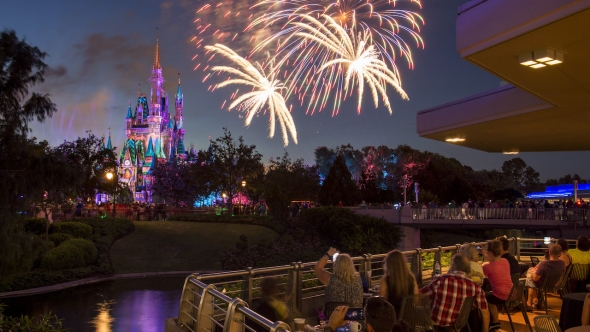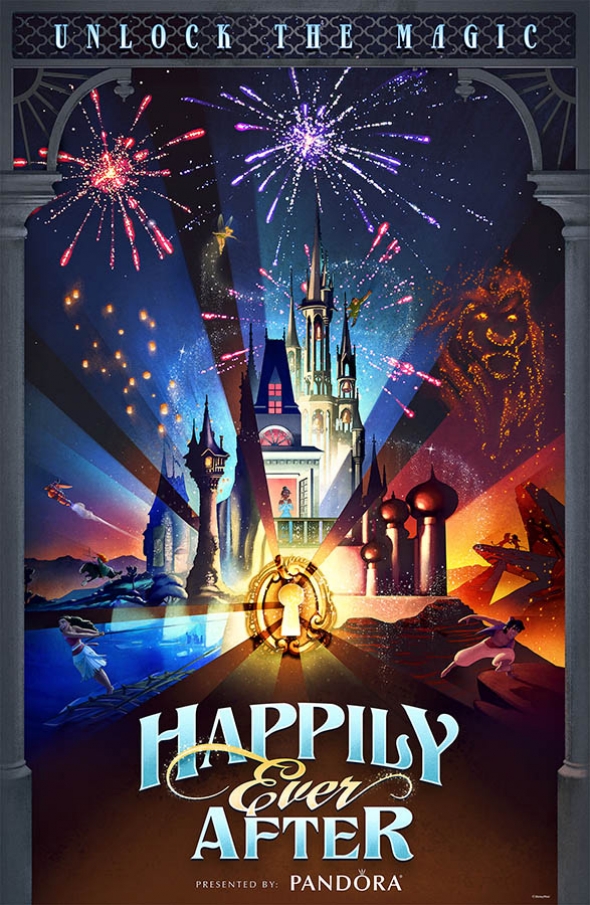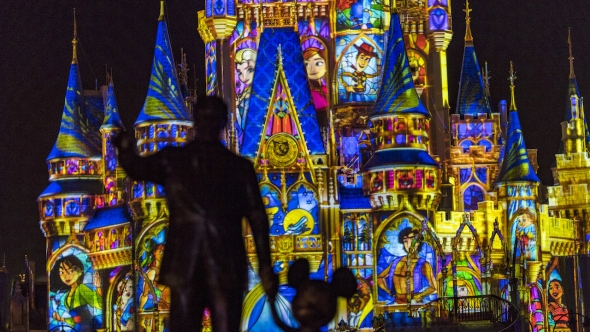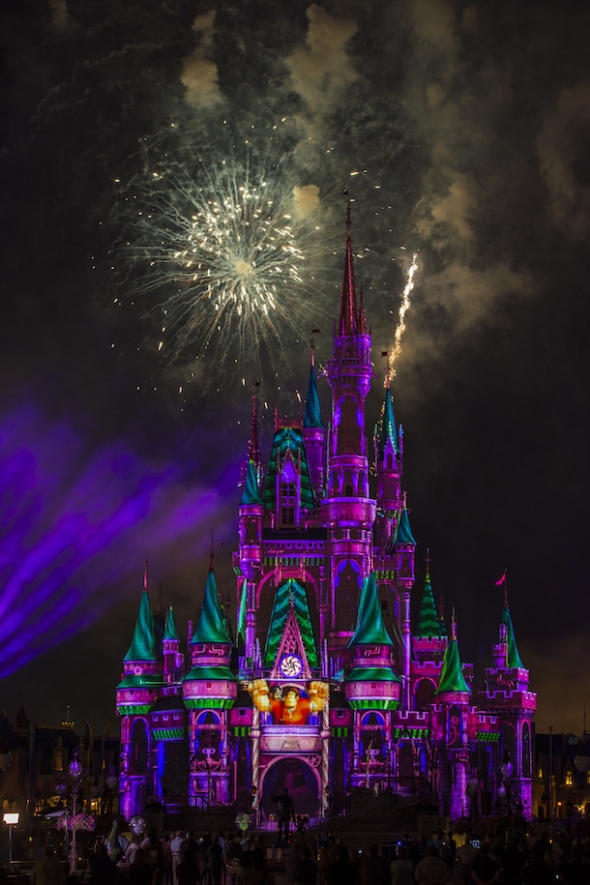The experience: watching heroes overcome villains to live Happily Ever After
The Trick: combining countless Disney stories into a meta-story
Image @ Disney
After nearly 15 years of Wishes, Magic Kingdom needed some new stories. Disney had released a multitude of films during this time, none of which was represented in the prior show. To wit, Disney hadn’t even purchased Pixar when Wishes debuted.
The creative team on Happily Ever After faced a difficult task. They had to cull a list of dozens of beloved Disney animated movies into a single show, and they needed modern entries. Even while emphasizing 21st century productions, however, the show couldn’t exclude the classics from the Disney library. And the segments needed to join together to tell a new story. How does a show combine elements from the golden age of Disney, which began in 1937, up to a movie released in 2016, though?
Imagineers deserve a lot of credit for their inventive solution to this problem. They broke the story into seven distinct parts. The beginning of Happily Ever After is a kind of tribute to the previous fireworks show at Magic Kingdom. It’s called Wish aka Dreams, and it shows characters like Tiana (The Princess and the Frog), Aladdin, and Quasimodo (The Hunchback of Notre Dame) wishing for better lives. Their sequences are set to musical accompaniment, generally the most famous songs from the movies.
Image @ Disney
Thanks to the digital projections, Happily Ever After displays memorable moments from some of the films. In other instances, Imagineers have created entirely new footage exclusively for the presentation. These segments blend together seamlessly to advance the underlying theme of each story segment.
The structure of each segment is noteworthy. The second part, Adventure aka Journey, emphasizes the Pixar library. A Bug’s Life, Brave, Cars 3, Finding Nemo, and Up are represented during this portion. The most recent Disney animated film shown in Happily Ever After is part of this segment, too. Moana, a film that celebrates explorers, is a perfect fit to close out this act.
Image @ Disney
During the Friendship segment, Disney integrates some of their most beloved 1990s tales like The Lion King, Tarzan, and Aladdin with more recent titles like Big Hero 6, Wreck-It Ralph, and Zootopia. A couple of Pixar films are present here, also. The purpose of this story arc is to remind everyone that friendship is at the core of most Disney films. Why, the only thing more like likely is…
Love is the fourth segment. As you might imagine, a LOT of Disney movies are in play here. Disney chose this segment to highlight its classic titles. There are appearances by Snow White and the Seven Dwarfs, Sleeping Beauty, and Cinderella here. The most beloved modern classic with this theme, Beauty and the Beast, is part of this arc, too, as is The Princess and the Frog.
Happily Ever After experiences a tonal shift in the next act. The villains appear during Adversity. Their goal is to bring down the heroes shown in Happily Ever After. Before any truly heinous actions can occur, the show leads directly into its sixth phase, Heroes Fight Back aka Triumph.
Image @ Disney
This segment is exactly what you’d expect, albeit with one surprising choice. Pirates of the Caribbean is part of this sequence. It’s the only live-action film appearing in the entire show, and the unforgettable fight music from the movie blends perfectly with the scene.
Thanks to the bravery of the heroes during the sixth act, the Happily Ever After climatic sequence comes next. It’s a hodgepodge of many of your favorite Disney characters, all of whom look vibrant and ecstatic as their images are projected onto the front of Cinderella Castle. It’s an enchanting crescendo punctuated by upbeat narration and a familiar sight.
In all three nighttime shows at Magic Kingdom, a highlight has signaled the end of the festivities. Tinkerbell flies away on a wire. It’s a show-stopping moment, and the creative team for Happily Ever After wisely kept it. Fittingly, the musical accompaniment is You Can Fly from Peter Pan. As you’re about to see, Disney carefully selected the songs for the show. This one was a no-brainer, though.





Add new comment